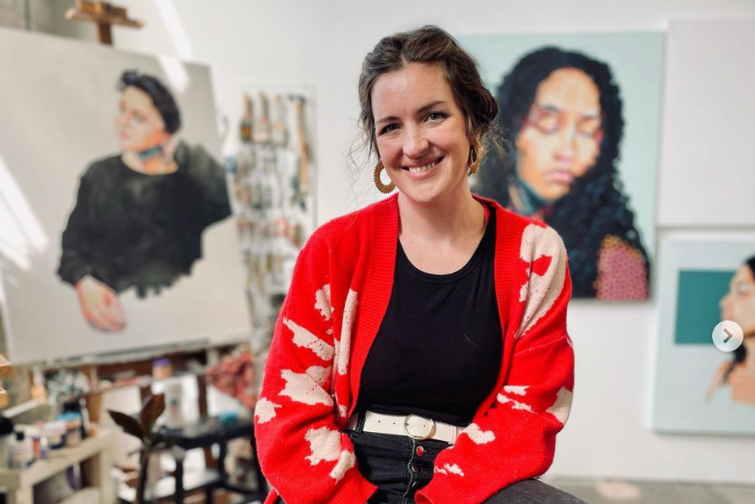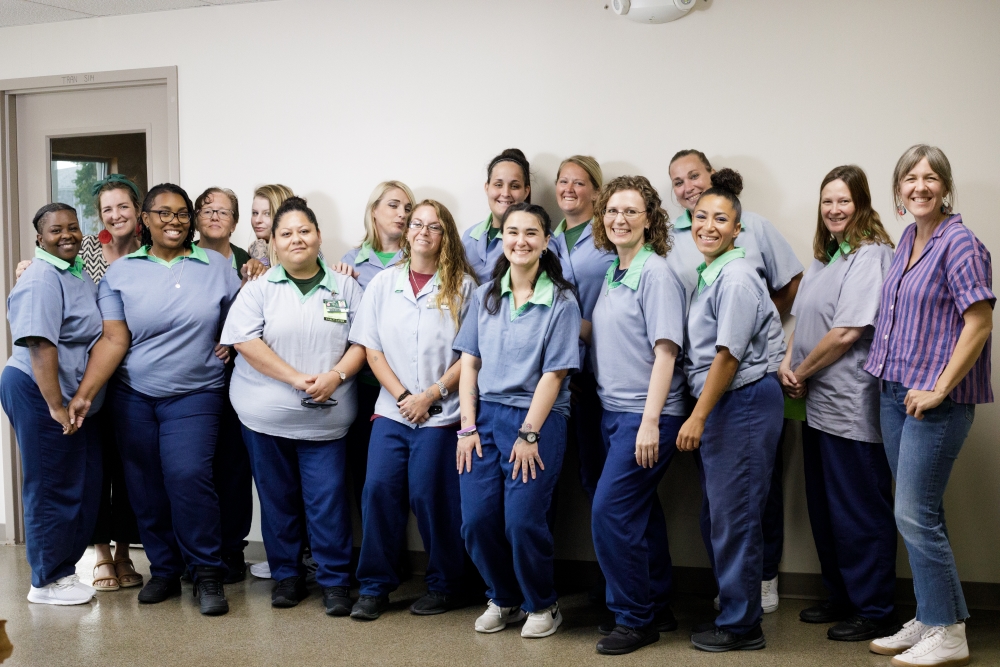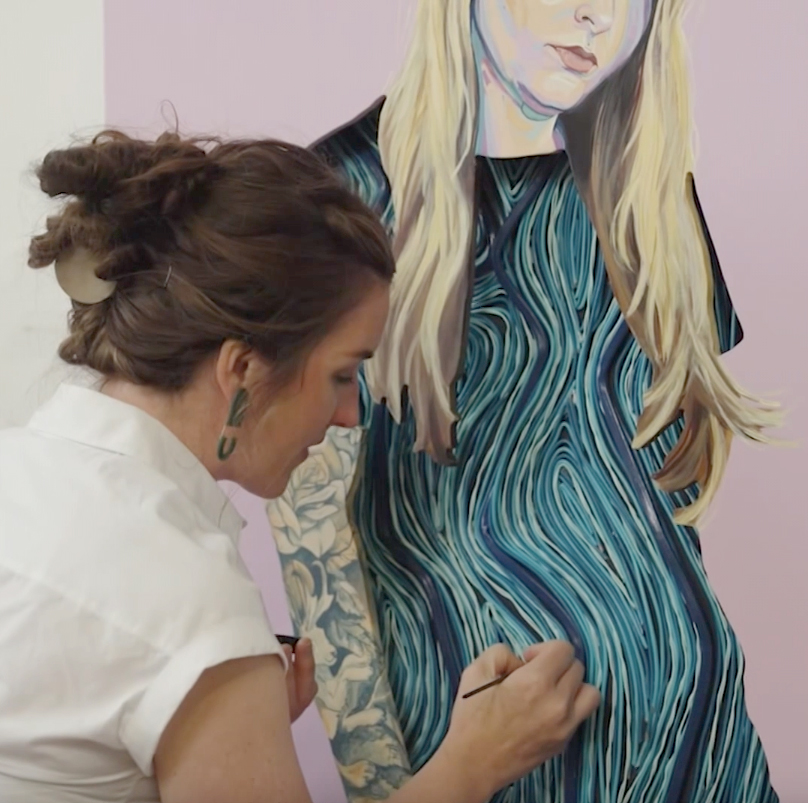For Kirsta Benedetti, Life Is Precious

 By Emily Zeller, curation committee member of Wild Goose Creative
By Emily Zeller, curation committee member of Wild Goose Creative
Kirsta Benedetti is a Columbus-based artist working in painting, illustration and installation. Her mixed media portrait series Life Is Precious features women residing at the Ohio Reformatory for Women (ORW), and will be on display Oct. 11-30 at Wild Goose Creative, along with pieces created by the women of ORW.
Emily: How did you get started in art? What do you remember about first being intrigued by it?
Kirsta: I have always loved art, and so I’ve always been someone who creates art. Whenever my family went on vacation to a big city, we got to choose one thing that the whole family would have to do — and mine was always going to an art museum. I don’t remember how old I was, maybe in middle school, and I experienced a Félix González-Torres piece — one of the candy pieces. I remember at first being like, awesome, it’s a big pile of candy and we can take one? And then reading about the piece as I’m eating this candy and being like… I don’t know how I feel about eating this candy! And then all of a sudden my mind just exploded with the potential art has for changing people.
Emily: Who are some of your inspirations, in addition to González-Torres?
Kirsta: When I was in college I experienced some of Ann Hamilton’s installations at the Hirshhorn that were really amazing. More recently, Titus Kaphar — he’s a painter, but he is someone who does more social impact / social justice based art. He’s a Black artist who challenges history, specifically through art, by painting these really elaborate classic portraits of white generals like we’d see in the National Portrait Gallery, but then he cuts the canvas so you can’t see nearly as much of the white man anymore. He paints a portrait behind it of a black woman, usually someone who that man had enslaved, so they start to represent the untold story behind this white man and his history. I’m definitely inspired by his work and the power of images, and challenging the tradition of the portrait.
 Emily: How do you approach creating?
Emily: How do you approach creating?
Kirsta: My husband is actually a big part of my process. I’ll start by telling him an idea, and then we talk and things tend to evolve. I’ll take reference images, do basic digital sketching, find my colors and mock things up to make sure they’ll work, then I either start on the paint or the more physical stuff. Being a mom means my time is never my own, and so for years now I’ve had to be incredibly efficient in my art making. I’ve always loved painting, but I think I’ve always loved it because it was very accessible to me. When I had no money, I could usually find some paint and go to a thrift store to buy a canvas, or repurpose something to paint on. Part of the reason why I do portraiture is because there is this inherent value placed on someone who’s painted. It’s as if they’re suddenly elevated. I don’t know if it is the history of portraiture being only for nobility and wealthy people that has continued, or if it’s an innate human instinct that if someone has been immortalized through a painting — if someone’s taking the time to paint someone else, it’s because they’re valuable.

Emily: What question do you get asked most often about your art, and how do you answer?
Kirsta: The first question is usually, “Who are these people? Are they movie stars?” which again reaffirms the notion that they’re automatically very important people if they’re painted. I end up saying, “No,” but once I answer that question, there’s a lot of questions. A lot of people ask, “What did they do?” That question I don’t answer. What I’ve come to know about incarceration is that one of the first things you lose is the right to your own story. There’s this huge thing in your life that becomes public record, but that record is very one-sided, and it doesn’t usually take the time to ask you where you were at, how you were feeling or what this means in the greater context of your life. I try instead to talk more about the complexity of incarceration, and give them back as much power as I can over their story.
Emily: What is one of your favorite things about Columbus?
Kirsta: I grew up in Columbus and have lived elsewhere throughout the world, and I’m always grateful that I moved back. The thing I love now more than ever is that Columbus is finally owning and celebrating the cultural diversity of the city. There are so many nationalities in Columbus. Near where we live we can choose from about 15 different countries’ cuisines within a two-block radius, and that’s absolutely delightful. I loved living overseas, but I love even more that I can be home and experience the world at the same time.
Kirsta Benedetti’s Life Is Precious portraits, as well as artwork by the women of ORW, is on view at Wild Goose Creative from Oct. 11-30. This project is an extension of Life Stories by We Amplify Voices, and co-facilitated by Carrie Fletemeyer.
This article is part of a bi-weekly column brought to you by the Greater Columbus Arts Council as part of the Art Makes Columbus campaign. Explore a calendar of events, public art database and artist stories at columbusmakesart.com. To learn more about GCAC grants visit gcac.org.

